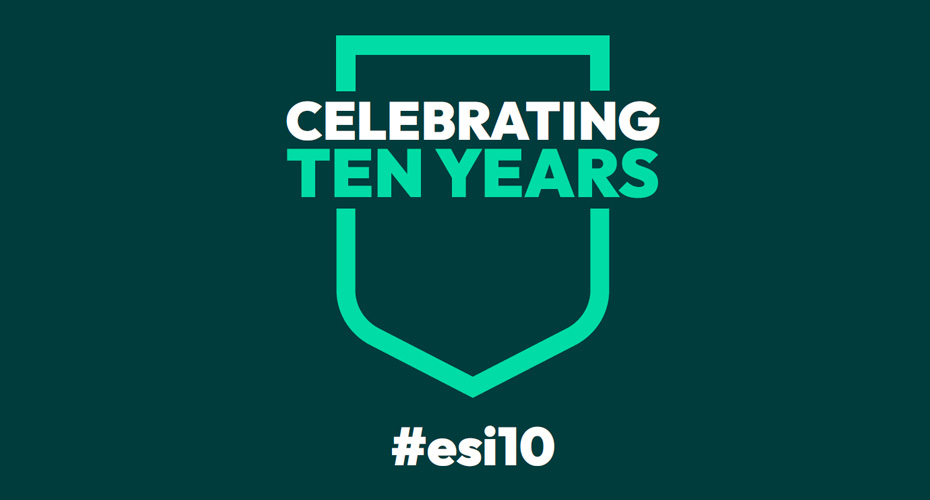Dr Daniel Padfield
We have been catching up with our very first PhD students and Postdoctoral researchers to see what has happened since they joined us a decade ago. Here you can read about their reflections of working at the ESI, information about what they are doing now and we look ahead to their future plans.
More conversations to be added soon!
What were you working on when you first joined the ESI?
During my PhD I contributed to some key discoveries that linked the impacts of climate warming on ecological and evolutionary dynamics of phytoplankton, from individuals to whole communities. First, I demonstrated how phytoplankton can rapidly evolve increased thermal tolerance by downregulating respiration more than photosynthesis. Next, I showed that, with knowledge of the individual size distribution and environmental temperature, rates of primary productivity and community respiration can be approximated using metabolic scaling theory. Finally, I used a set of geothermal streams to demonstrate that selection on photosynthetic traits dampens the effects of temperature on ecosystem-level gross primary production both within and across taxa. This work was especially cool as I aggregated and combined the results from two years of second-year field course to Iceland that Gab led, and I helped demonstrate on. I worked really hard, but was also really lucky that this body of work resulted in three first-author papers in Ecology Letters, and I successfully defended my thesis in July 2017.
What was your proudest achievement?
My proudest achievement in academia to date is securing a NERC Independent Research Fellowship this year, which I am due to start in January 2023. This 5-year fellowship will allow me to start my own research group and will explore how temperature alters the ecology and evolution of antibiotic resistance in microbial communities. I am especially proud of this as throughout my research career I have balanced my academic work with caring for my partner who has severe ME, is bedbound, and suffers from constant, whole-body neuropathic pain. This balance always feels extremely delicate, so I am incredibly proud, privileged, and lucky to be able to follow the research I am passionate about through the IRF.
What happened next – where did you go?
I never left the ESI and Cornwall since moving down in 2013! I really enjoy the research culture here at the University of Exeter Cornwall Campus and the slightly slower pace of life that the everyone seems to have in Cornwall.
After my PhD, I remained at the ESI and started a postdoc with Professor Angus Buckling, where I transitioned to working primarily on bacteria to allow me to better disentangle ecological and evolutionary processes impacting microbial communities. Then in January 2021, I started a postdoc with Dr Michiel Vos, where I am the lead statistician and bioinformatician on a project exploring adaptive radiations in natural populations of bacteria.
I will start the prestigious NERC Independent Research Fellowship in Janary 2023.
What was the most useful lesson you learned at the ESI?
The most useful lesson I have learned at the ESI – through my mentors – is the importance of being nice, collaborative, and having a healthy work-life balance in academia. My mentors have always been extremely understanding of my life situation and I cannot stress enough how important that has been in my career (and life) over the last 5 years. This level of compassion and acknowledging that researchers have interests and lives outside of science, is something I hope to take with me as I start my own research group.
I have also learned the benefit of being extremely collaborative and the value of helping your friends out. The ESI has a large and thriving group of researchers interested in the ecology and evolution of microbes, but I have consistently created interdisciplinary collaborations – usually the giving of R and statistical advice - with my colleagues (and friends) in the ESI. This has resulted in co-authorships in diverse fields, such as in European pine marten reintroductions (led by Dr Cat McNicol), an R package to derive social networks from mark-recapture data (led by Dr Matt Silk), and a study looking at the links between game bird abundance and common buzzards (led by Dr George Swan).
What will the ESI be like in another decade – what will we be working on then?
Is this like the “predictions of the future” stories in newspapers? We will all be using remote controlled pipettes in the lab, and we will get between floors in the ESI by using a series of trampolines set up in the atrium. Just kidding (although that would be nice!) I expect the ESI to go from strength-to-strength over the next decade and help tackle some of the global crises (e.g. climate change and antibiotic resistance) facing humanity. Watching the number of researchers interested in microbial ecology and evolution grow and grow has been super exciting for me. It is now one of the largest in the UK and spans a huge range of research interests. I look forward to seeing what we can all achieve together and what collaborations can be made.
From a personal perspective, I hope to be leading my own research group investigating how multiple abiotic stressors (such as temperature, antibiotics, and fertiliser) alter the ecology and evolution of microbial communities. We know a fair bit now about how these factors in isolation impact microbes, but we are only just starting to understand how they act in parallel. While doing this, I hope to continue my passion for open-source software and providing tools that are useful for the wider research community.

